The NCAA tournament is all about small schools putting themselves on the map thanks to big legends. Here are six of the best. For purposes of this list, we only considered the era after the tournament expanded to 64 teams (and beyond).
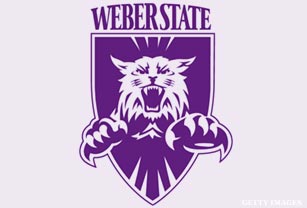
No. 6 Harold Arceneaux
1999: Harold "The Show" Arceneaux may have been the most unlikely of NCAA tournament heroes. He grew up in the projects of New Orleans where his poor grades steered away Division I offers. Arceneaux attended two junior colleges before receiving a scholarship offer from Weber State in Ogden, Utah. In his first year at Weber State, Arceneaux led the Wildcats to a Big Sky championship and a first-round date with North Carolina, which was celebrating its 25th consecutive tournament appearance and planned on extending its first-round winning streak to 20. But “The Show” lit up the third-seeded Tar Heels for 36 points, including 20 in the second half. Arceneaux gave No. 14 Weber State a double-digit lead for most of the second half before UNC pulled to within 73-72 with 13.3 seconds left in the game. That's when Arceneaux -- in front of a national audience, just one year after playing junior college ball -- iced the game with two clutch free throws. The game ended with Arceneaux stealing the ball from UNC as time expired. Two days later, Arceneaux scored 32 points in a heartbreaking overtime loss to the Florida Gators.
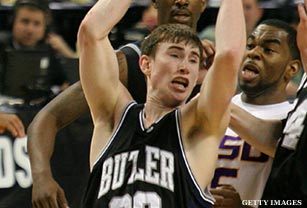
No. 5 Gordon Hayward
2010: Gordon Hayward could have gone to Purdue to be an important role player on a perennial contender. Instead, he passed and went to Butler. Why? Because his twin sister got a tennis scholarship at Butler and the 6:30 a.m. practice time didn’t interfere with his computer engineering major. By Hayward’s sophomore year, though, he was the Horizon League Player of the Year and Butler was a No. 5 seed. After victories over No. 12 UTEP and No. 13 Murray State in which Hayward averaged 12.5 points, the Bulldogs met No. 1 Syracuse. Against the Orange, Hayward dropped a game-high 17 points with five rebounds and two steals. In the West regional finals, Hayward overpowered No. 2 Kansas State and its big man Curtis Kelly for 22 points and nine rebounds. Butler headed to Indianapolis for a hometown final four. Feeding off Butler's hometown crowd in Indianapolis at the Final Four, Hayward dropped another 19 points on No. 5 Michigan State, along with nine rebounds, two steals and two blocked shots. Then, in the national championship against No. 1 Duke, Hayward gave the Blue Devils all they could handle. Matched up against Brian Zoubek, Lance Thomas, and Kyle Singler at different parts of the game, Hayward could not find range from the field early on. Realizing his predicament, Hayward focused on using strength, rather than agility. He was able to able to get to the foul line eight times during the game and knocked down all of them. And then of course, with the game on the line, Hayward almost did the unthinkable. His halfcourt heave, while down by two points as time expired, came within inches of being the most amazing game-winner in sports history.
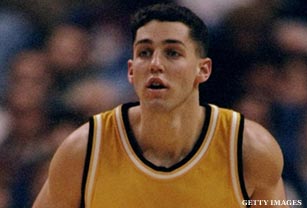
No. 4 Bryce Drew
1998: Bryce Drew grew up in Valparaiso, went to Valparaiso High and committed to Valparaiso without hesitating. His father, Homer, became the school’s head coach in 1988, but at the time of Bryce’s arrival the school had never played in the NCAA tournament. Bryce changed that by bringing the Crusaders to the tourney as a sophomore and a junior. In his senior year, No. 13 Valpo faced No. 4 Ole Miss in the first round. Bryce had an off-night shooting, starting off the game 6-14, but Valpo’s supporting cast kept the Crusaders within two points in the final minute. With five seconds to go, down 69-67, Drew bricked a three-pointer that fell into the hands of Ole Miss’ Ansu Sesay. Sesay, a 74 percent free-throw shooter, missed both free throws, giving the ball back to Valpo. With 2.5 seconds left, Valpo inbounded under its own hoop. Homer Drew designed a play call the “Pacer,” which would later become known as “The Shot.” Jaime Sykes chucked the ball downcourt to Bill Jenkins, who quickly tossed the ball to the coach's son. Bryce knocked down the jumper that CBS currently ranks as the network’s fifth most memorable tournament moment. Valpo then beat Florida State to reach the Sweet Sixteen.
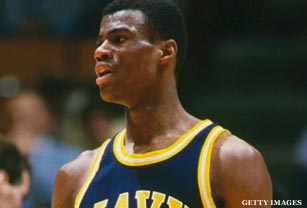
No. 3 David Robinson
1986: The Admiral has two NBA titles, one NBA MVP Award and a plaque in Springfield, so his astounding collegiate career at the U.S. Naval Academy sometimes goes overlooked. When Robinson arrived in Annapolis, Navy had not made the tournament since 1950 and had no clue if its 6-9 center was the answer. By his sophomore year, Robinson had grown to 7-0 and brought the Midshipmen back to the tourney in 1985. Then in 1986 as a No. 7 seed, Navy beat Tulsa, 87-68, before meeting second-seeded Syracuse on the Orangemen's home court, the Carrier Dome. Three months earlier at the Dome, Syracuse had embarrassed Navy 89-67. This time, though, Robinson would not be denied. He posted 35 points, including 21 on free throws, 11 rebounds and 7 blocks en route to a 97-85 victory. Robinson extended his defensive domination against fellow mid-major, No. 14 Cleveland State, in the Sweet 16, where the Midshipmen prevailed 71-70 behind his nine blocks. When No. 1 Duke finally knocked off Navy in the Elite Eight, Robinson had already set the record for blocks in a tournament with 23.
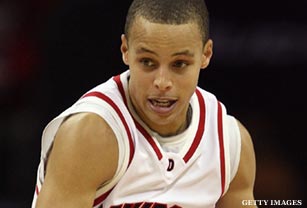
No. 2 Stephen Curry
2008: Shunned by Virginia Tech, his father Dell’s alma mater, and practically every other elite basketball program in the country, Curry ended up at Davidson, a school looking for its first NCAA tournament win in more than 35 years. Curry set freshman records at Davidson with 730 total points and 122 three-point field goals, but his success in rural North Carolina went under the radar. As a sophomore in the 2008 tournament, Curry went on a legendary run in the second of the opening-round game against Gonzaga. He made 8 of 10 three-pointers and score 30 of his 40 points in the second half, propelling No. 10 Davidson to an 82-76 win. Two days later, Roy Hibbert and No. 2 Georgetown held Curry to just five first-half points, as the Hoyas built a lead as high as 17 points. Once again, Curry had a second-half field day, draining outside shots for 25 more points and a 74-70 victory. Next, Curry danced around No. 3 Wisconsin and über-defender Michael Flowers, as his 33-point outing punched Davidson’s ticket to the Elite Eight. Curry tacked on another 25 points, including a national record 159th three-pointer, but the Wildcats fell to Kansas, the top seed and eventual champs, 59-57.

No. 1 Bo Kimble
1990: Teammates at Dobbins Tech High School in Philadelphia, Bo Kimble and Hank Gathers continued to be a dyanmic duo in college, first at USC and then at Loyola Marymount. With former NBA coach Paul Westhead at the helm, Kimble and Gathers brought LMU national recognition in the late 1980s and were ready to shine in the 1990 tournament. Just one week before it started, though, Gathers dropped dead of a heart condition during LMU’s WCC semifinal playoff game against Portland. An inspired Kimble led the Lions, an 11th seed, to upsets over No. 6 New Mexico State, No. 3 and defending champion Michigan (by 32 points) and No. 7 Alabama. They lost to top-seeded UNLV, the eventual champion, in the regional finals. In all four games, Kimble shot his first free throw left-handed as a tribute to the southpaw Gathers, and he made all four. Kimble averaged 35.8 points in the tournament, and went eighth overall in the NBA draft to the Clippers.




